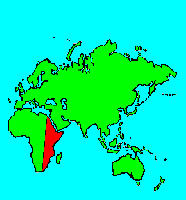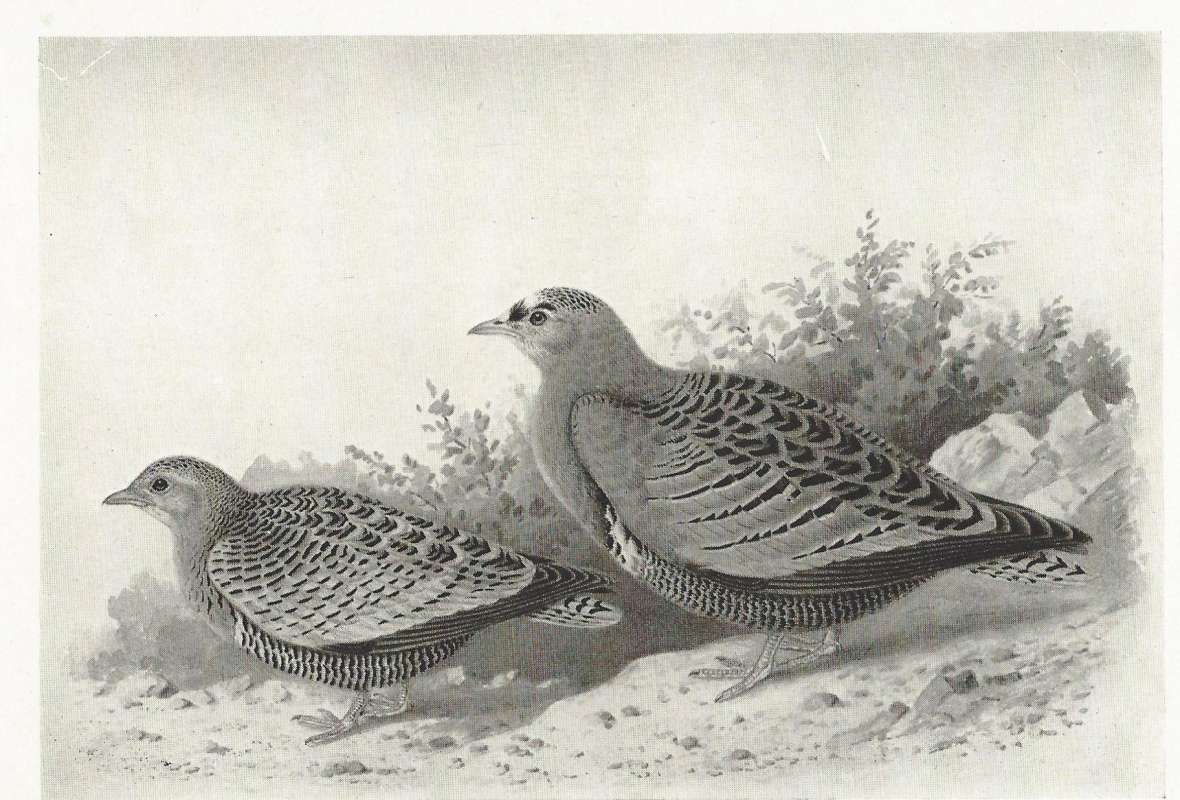SPECIES INFO
Four banded sand grouse (Pterocles quadricinctus) is found from Senegal east to Ethiopia and Eritrea and south to northern Uganda and northwestern Kenya. This is a small species for the genus. The three bands found in the male: reddish, white, and black divide the upper and middle breast.
There are no subspecies.The sandgrouse genus (Pterocles) contains 14 species of somewhat pigeon like birds that can be found in dry areas in most of Africa and most of central and western Eurasia.
Sandgrouses (Family Pteroclidae) are a group of 16 species that are limited to the dry regions of Europe, Asia, and the African region. In spite of their small size, most species are regarded as prime game birds. Although related to doves, these birds remind one of partridges.
Some scientists place this family of 16 species in its own order, the Pterocliformes. Two genera are contained in this family: Syrrhaptes(2 species) and Pterocles(14 species).
Pigeons and Doves (Order Columbiformes) contains three families. The dodos (Family Raphidae) are extinct. The other families are the sandgrouse (Family Pteroclidae) and pigeons (Family Columbidae).
Clements in 2007 counted 308 pigeons and doves and Clements also counted 16 sandgrouse. (He, however, placed the sandgrouse in their separate order, Pterocliformes.)
Aves contains about 8,650 different species of living birds known to science. Each year about one new species is discovered in some remote rain forest or remote island. In addition, scientists have been raising many subspecies to full species status which may raise the species count to 10,000. Birdlife recognizes 10,027 species as of 2011.
However, each year about one species goes extinct. The rate of extinction is increasing, and the rate of new discovery is decreasing, so that the number of bird species will soon begin to decline rapidly. Although different taxonomists would organize the birds differently, there are approximately twenty-seven orders of birds. These orders are broken down into about one hundred and fifty-five different families.
Recent research of the genetic structure of some of the shore birds and owls would indicate that the present organization of orders and families should have some modification.
The birds are a worldwide group of animals that are characterized by having the front limbs modified into wings that are used for flying. Perhaps the most unique feature of the birds is the feathers. These feathers are made up of a central support called a quill and a series of small filaments that are hooked together as barbs.
For many years it was believed that Archaeopteryx discovered in Bavaria was the oldest bird from about 150 million years ago. However, in l986, Sankar Chattterjee, a Texas paleontologist, reportedly discovered a bird in the genus Protoavis that lived about 225 million years ago.
When this project was begun in 1978, we used Austin & Singer for bird taxonomy. Since then, we have adopted many changes, but have kept some older concepts that are still found widely in the literature. Recently, we have used Clements and Howard & Moore. Very recently, we have used Monroe and Sibley for the higher taxonomy of the perching birds.
Backboned Animals (Phylum Chordata) are the most advanced group of animals on earth. These animals are characterized by having a spinal cord or backbone. Most members have a clearly defined brain that controls the organism through a spinal cord. Fish, amphibians, reptiles, birds, and mammals are in this phylum.
Currently, some taxonomists believe that the fish should be divided into two groups (sharks and regular fishes) and that there are some other primitive groups in the phylum such as hagfish or lampreys.
Animal Kingdom contains numerous organisms that feed on other animals or plants. Included in the animal kingdom are the lower marine invertebrates such as sponges and corals, the jointed legged animals such as insects and spiders, and the backboned animals such as fish, amphibians, reptiles, birds, and mammals.



